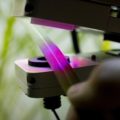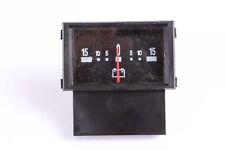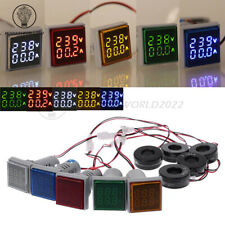
A study initiated by a North Carolina State University chemical engineer has discovered a new method of growing microscopic wires that can conduct electricity in a liquid environment.
The research of Dr. Orlin Velev and four colleagues shows that colloidal nanoparticles – dispersed particles ranging in size from 15 to 30 nanometers – can spontaneously self-assemble into wires when placed under the force of an alternating (AC) electric field, a process known as dielectrophoresis. The microwires are about a micrometer, or one-millionth of a meter, in diameter, and up to a few millimeters long. The formation of these microwires can be controlled and used in rudimentary electrical circuits.
The research was published Friday, Nov. 2, in the journal Science.
The study was performed at the University of Delaware, where Velev was a member of the research faculty before joining the faculty at the department of chemical engineering at NC State this summer. Velev’s research colleagues include Dr. Eric Kaler, dean of engineering at the University of Delaware (UD); Kevin Hermanson, a UD graduate student; Simon Lumsdon, a post-doctoral researcher at UD; and Jacob Williams, a summer research student from Carnegie Mellon University. The research was sponsored by the National Science Foundation.
Making electrical circuits in wet environments may lead to a host of bioelectrical uses, such as providing electrical connections to living cells and tissues. There’s no need for organic liquids or special solutions as the process can be accomplished in small amounts of water. Moreover, microwires will spontaneously connect to a conductive element – some carbon paint, for instance – that is placed in the wet environment. Eventually, it is expected that microwires will be used to connect living cells to electrodes.
The discovery caught Velev and his colleagues by surprise. “Nothing was expected to happen with waterborne metallic nanoparticles in the AC electric field because the force between these tiny particles is so small,” he said. In fact, using just two particles would not lead to assembly. Many particles are needed for wire growth to take place in a collective effort, unlike the simple chaining in organic liquids observed previously.
“When you miniaturize things, self-assembly is important,” Velev said. “With dielectrophoresis, there is no chemical reaction, no need for soldering, and the electrical connections are made spontaneously.”
The research showed that microwires that burn out due to higher currents or other factors spontaneously repair to form a new connection. Also, microwires stay intact when current is switched off, preserving the self-assembled circuits.
Velev and his colleagues used gold nanoparticles which are essentially inert and benign. A nanometer is one-billionth of a meter. He said silver, platinum, a variety of other metals and possibly carbon could also be used successfully in dielectrophoretic assembly. This research will be continued at NC State as part of Velev’s scientific program.


















Comments are closed.